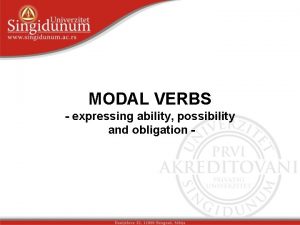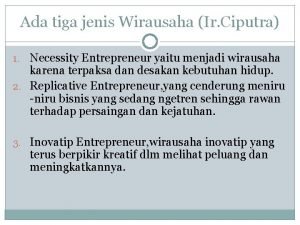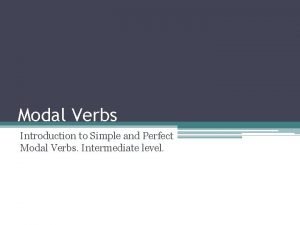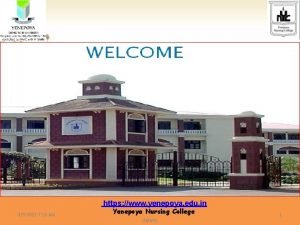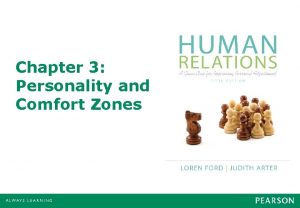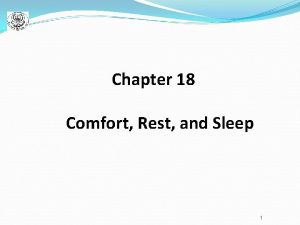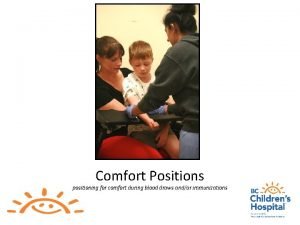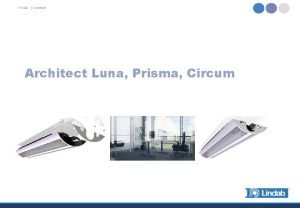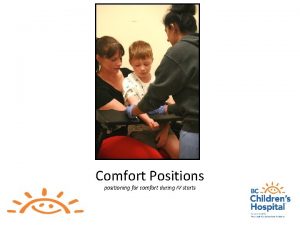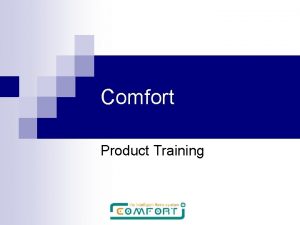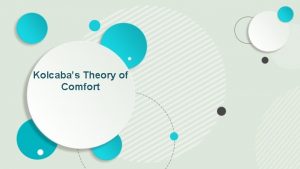Waltzing from Needs and Necessity to Comfort and














![Other reasons for DL • perfomance (because I failed [the tests] last year and Other reasons for DL • perfomance (because I failed [the tests] last year and](https://slidetodoc.com/presentation_image/0a9aeba7f816f11da278b568265165ee/image-15.jpg)







- Slides: 22

Waltzing from Needs and Necessity to Comfort and Convenience: Online and Distance Learning at the Upper Secondary Level Sólveig Jakobsdóttir, associate professor soljak@khi. is/soljak@hi. is Iceland University of Education/ University of Iceland Presentation July 2, 2008 at the Edmedia conference in Vienna

Development of online education (see e. g. Allen & Seaman's reports) • 2003: Sizing the opportunity. . . (1, 6 mi *) • 2004: Entering the mainstream. . . • 2005: Growing by degrees. . • 2006: Making the Grade. . . • 2007: Online nation. . . (3, 5 mi*) • 2008: ? *students taking at least one online class in college/university

Iceland May 7 th 2008 New government policy 2008 -2012 Netríkið Ísland The Online State – Iceland http: //www. forsaetisraduneyti. is/media/frettamyndir/NETRIKID_ISLAND_stefnuskra. pdf

Upper secondary schools (high schools/junior colleges) in Iceland Age of typical student at that level 16 -20, non-mandatory schooling Year of establishe mnt School 1846 MR 1880 1904 MA IR 1905 VÍ 1928 IH 1953 ML 1966 MH 1969 MS 1970 MÍ 1973 MK 1975 FB 1975 FLE 1976 FSS 1977 FVA 1979 FÁ 1979 KVR 1979 ME 1979 FV 1979 FNV 1981 FSU 1984 FG 1984 VMA 1987 FH 1988 FLAU 1996 BHS 1996 2003 Iceland a country of 300. 000 people, 100. 000 sqkm Ca. 61 -66⁰N (map from Landmælingar Íslands) VA 1977 FAS MHR 2004 FSN 2007 MB

Number of DE students - upper secondary level in Iceland 3000 2552 2500 2226 2000 1611 1500 1197 1281 1097 1000 500 0 2002 2003 2004 2005 2006 2007 Statistics Iceland. (2008). http: //www. statice. com 2 -4% increases per year in day school but 15 -38% in DE

This study • Study of distance and distributed education (DE) and the blend or mix of teaching methods and technical solutions that are being used in Iceland at the upper secondary school level. • Attempt to map the fast changes occurring from the standpoint of administrators, teachers, and students.

This study • Study, part 1& 2 – Administrators, fall 2005 and 2006, in all 29 schools, – telephone interviews – overall picture, technology, changes, advantages, drawbacks • Study, part 3 – Teachers and students, spring 2007, chosen six schools (eight) – Interviewed mostly through telephone, teachers in one school on site; students mainly in one school with MSN, a few using e-mail – More in-depth view of teaching and learning

In this presentation • Study parts 1&2 – Level of DE integration – groups of schools; kinds of students • Study part 3 – Reactions of learners: reasons, benefits, disadvantages

Age: Adult learners General studies (children, work) Renew old dipl. FÁ, FG VA, MH VÍ FSN, FB VMA FSU Art, ICT, multimed ia, library sci. Health, caring, social BHS IR Ca. 16 -20+ (upper sec. level) Vocational seaman “Regular” Abroad, health probl. FVA VA FÍV FB FÁ IR FÍV VA FÁ VÍ FG ME FAS VMA ML FSU ME Kv. R FSH BHS FSS IH (ML) (ME) FSS Ca. 14 -15 Need to catch up Grades 9 -10, extending subject FÁ VMA FG FÁ VÍ MS? FLE, FSU, FAS FÍV, VÍ

Number of DE students at the comprehensive level in Iceland 4000 3378 3500 2898 3000 2500 2192 2344 1896 2000 1537 1500 1000 795 500 0 2001 2002 2003 2004 2005 2006 Statistics Iceland. (2008). http: //www. statice. com 2007

Groups; DE • Group 1 - Strong DE “stems”: Schools in this group had strong DE “stems”, i. e. , with large groups of students registered in DE, and the DE program even about equal to the regular program. It varied to what extent the DE and the regular program is blended or separated. 14% – 24% • Group 2 – Sizable DE programs, but lower % of students than in group 1: Or small program apparently growing at a very fast rate (more top-down). 31% - 21% • Group 3 – Regular school program, but DE starting in some ways for groups or courses and/or time. Some schools started to use LMS highly and experiment with shorter school days or fewer regular classes as a result. 14% - 24% • Group 4 - Use of LMS or intranet were in high use in schools in this group by most teachers/student but attendance, length of school day, and schedule unchanged. 14 -14% • Group 5 – LMS or intranet in use in most or all schools but not as widespread as in group 4. 28% - 17%

Study, part 3 participants (all 18+) DEgroup CMS S 1 S 2 S 3 S 4 S 5 S 6 1 1 1 2 4 4 Web. CT Moodle Námskjár Home made R G R C C C R G 3: 3 4: 2 All Videoconf. Location Grade or course-b Teachers C C x C C no. 4 2 5 4 6 4 25 3: 1 0: 2 2: 3 2: 2 3: 3 2: 2 12: 13 9 30 19 -50 6: 3 10 27 19 -58 9: 1 5 19 18 -20 3: 3 11 21 19 -29 3: 8 10 20 19 -20 7: 3 53 24 18 -50 34: 23 F: M Students No. 8 Mean age 28 Age range 23 -35 F: M 4: 4

Students' attitudes • Overall students tended to be positive in their attitudes towards DL and uses of LMS‘s. • They gave various reasons for their choice of studying at a distance. For some students in Schools S 1 and S 2 the reasons had to do with access to education and/or lack of access to schools at the upper secondary level in their home towns and/or a desire for more education at that level. • Students in most schools mentioned that they had to work with school so that was the main reason to choose DL. • Many mentioned flexibility as the main reason

Reason for DL - flexibility – Because I want to use time to do something smart while my wife is studying abroad – I did not want to move – Before the DL I only had the choice to move and tried it but did not like it well – Because I decided to move abroad and did not want to get behind in school – I have my own time and everyhing is much freer, I think. – I chose DL because I am graduating in six semesters instead of eight and therefore I have been taking very big semesters and still I did not get all of my courses into the [class time] schedule. – Because it suits me I have 3 children – Just so that I can stay more at home – I cannot afford to finish my studies otherwise
![Other reasons for DL perfomance because I failed the tests last year and Other reasons for DL • perfomance (because I failed [the tests] last year and](https://slidetodoc.com/presentation_image/0a9aeba7f816f11da278b568265165ee/image-15.jpg)
Other reasons for DL • perfomance (because I failed [the tests] last year and if I do not pass this I need to repeat the year); • physical reasons (I chose DL because I am hearing impaired and there are many things I do not catch in the dayschool that I do get in the DE) or • social reasons (then I cannot always wake up for school, anxious and have morning depression).

Advantages to DL - flexibility • There were about 27 advantages students mentioned of DL (or uses of LMS’s). Flexibility! • Flexibility in time (11 students) – Then you have time to do something else and rather want to use your time for something that you are not doing as well in; • Flexibility, freedom (9 students) – The pluses with this type of study is first and foremost that one has more freedom; • Flexibility, location (9 students) – Good for people who live abroad or in the countryside • Combination of work+study (9 students): – That you can work like crazy [during your studies]

Advantages to DL, cont. • Access to information, notes (7 students). Mainly because there is more information flow between student and teacher and one can get better notes than one would take oneself • Easy access (general comments) (4 students). • Attendance - don’t necessarily need to attend classes (4 students). Examples: If one misses a class or is sick one can still follow what went on ; do not need to sit in boring classes that one really does not have any use for • Can go on holiday/take a break but still catch up (3) • Faster feedback [when taking online tests] (3), • better preparation for tests (3)

Differences by school/area? main advangages and disadv. of DE S 1, country S 2, country S 3, R-area S 4, R-area S 5, country S 6, R-area 1 1 1 2 4 4 Email, webct Videoconf. 100% online Moodle Web. CT 100% online Moodle Campus Blended Námskjár starting to offer on individual basis Home made system Freedom Flexibility Independ. Work+school Flexibility No attendance Problem Free of crowds, immature students Flexibility Easy access to assignments and to turn them in More time for difficult subjects Info access to notes, better to prepare for tests Quicker feedback in online tests Work+school Don’t have to move Wider selection Impersonal not enough contact with teachers and other students, cost (S 3) Self discipline needed Having to use computers/technology out of school (S 6) Some subjects not suited (S 5)

Needs and necessity! Distance learners at School 2 located in a rural area, emphasized that they: • did not have to move by studying at a distance, • that they had a wider selection of courses, • that nothing else was available or • that they could work with their studies. That is those reasons had to do with need and necessity.

Comfort and convenience! • On the other hand, students in school S 3 emphasized flexibility, liked to be rid of attendance problems, be free of crowds and immature students, even going on a honeymoon during the semester. – The main benefits are to be able to study at home, have the teachers almost in your own livingroom. Be able to work full time with my study and in my case not to have to spend my time everyday in a crowd of several hundred people that I don‘t know. In this program I also find it nice to be able to take breaks when I want to and when I really need to. – Of course the freedom and time that one can use for something else, e. g. work and also the peace to do work. I have difficulties with my temper and to work close to people that still behave like 8 th graders, don‘t think people is taking their studies seriously, pays for it and then don‘t want to be bothered to work, great to be rid of those kinds. – This is INCREDIBLY convenient. I have always had A „LEETLE” problem with school attendance so this suits me well. Then it is of course great to be able to take a short break from Iceland but still not fall behind in school! As long as you have good computer connections it is perfect!

Discussion Education vs. Just-in-time learning? A tendency to focus on content? Too much emphasis on the individual? Too little emphasis on community building, social elements? • Effects of the LMS? • What happens to younger students taking upper secondary school credit? • Drop-out rates already fairly high in day school – going up in DE. • •

 Once a jolly swagman
Once a jolly swagman Primary needs and secondary needs
Primary needs and secondary needs Primary needs and secondary needs
Primary needs and secondary needs Simple claustral complex
Simple claustral complex Strategic gender needs and practical gender needs
Strategic gender needs and practical gender needs Target needs and learning needs in esp
Target needs and learning needs in esp گرامر permission obligation and necessity
گرامر permission obligation and necessity Necessity advisability and expectations
Necessity advisability and expectations Expressing necessity and ability
Expressing necessity and ability Advokate police
Advokate police Necessity of irrigation
Necessity of irrigation Necessity of fuse
Necessity of fuse Apa saja jenis wirausaha menurut ir. ciputra
Apa saja jenis wirausaha menurut ir. ciputra What year did george washington attacks ft necessity
What year did george washington attacks ft necessity Business necessity definition
Business necessity definition False necessity trap
False necessity trap Vital necessity
Vital necessity What is the necessity of starter in 3 phase induction motor
What is the necessity of starter in 3 phase induction motor Modal verbs introduction
Modal verbs introduction Hand rolls in hospital
Hand rolls in hospital Chapter 31 comfort rest and sleep
Chapter 31 comfort rest and sleep Comfort and rest
Comfort and rest My jesus my savior
My jesus my savior








